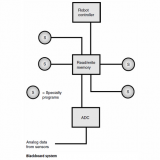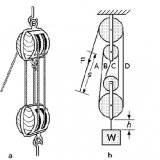MICROWAVE DATA TRANSMISSION – 21089
Microwave data transmission refers to the sending and receiving of wireless data at extremely high radio frequencies. Microwaves are very short electromagnetic waves, but they have longer wavelengths than infrared (IR) energy. Microwaves travel in essentially straight lines through the atmosphere, and are not affected by the ionosphere. Thus, they can easily pass from Earth’s surface into space, and from space to the surface.
Microwaves are useful for short-range, high-reliability data links.Satellite communication and control are generally carried out at microwave frequencies. The microwave region contains a vast amount of spectrum space, and can hold many broadband signals.
Microwave radiation can cause heating of certain materials. This heating can be dangerous to human beings when the microwave radiation is intense.When working with microwave equipment, care must be exercised to avoid exposure to the rays.
The illustration shows a simplified block diagram of a microwave transmitter and receiver, including the antennas. The antennas are highly directional and must be aimed at each other with a line of sight between them.Microwave data transmission is useful in robotic systems in which a line of sight can be maintained between machines while they are in communication.




